Rotationskörper | Solids in Revolution
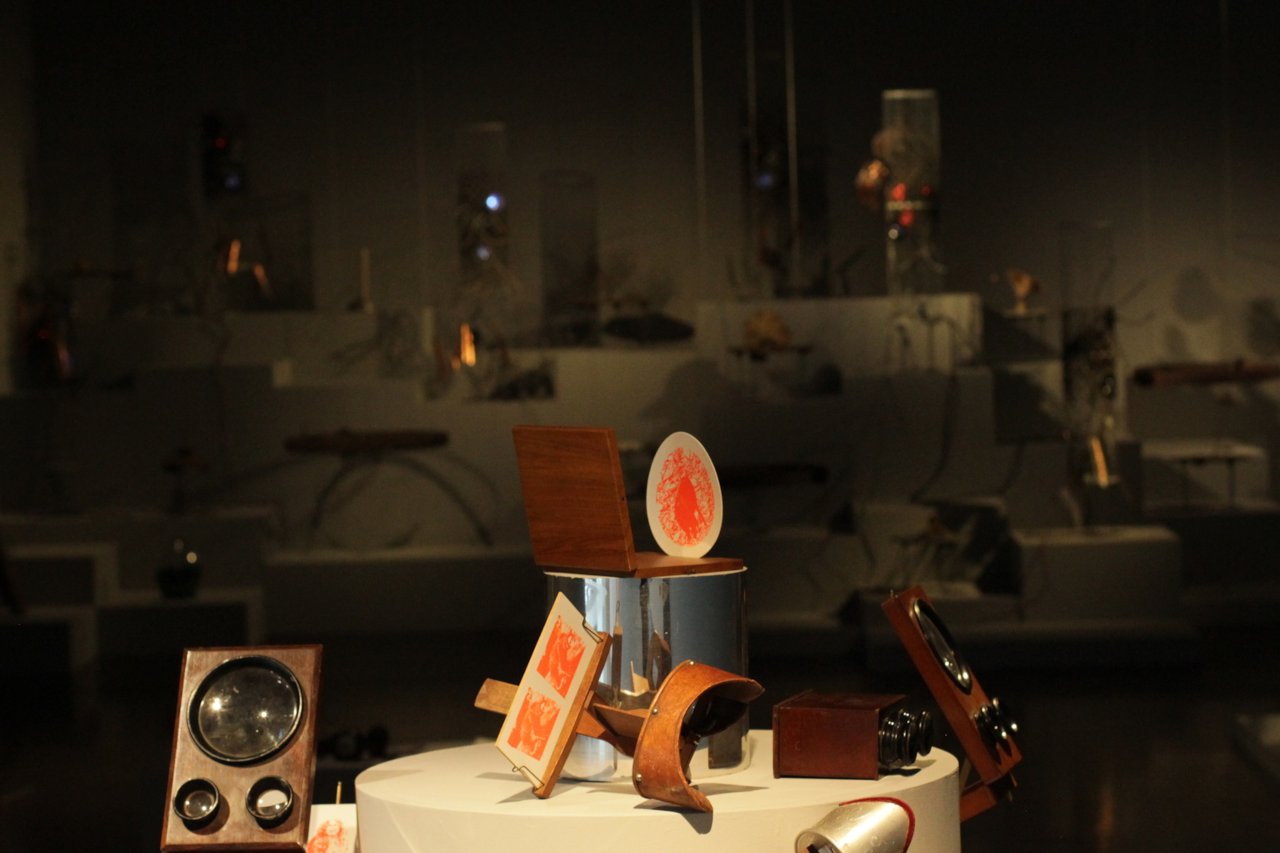
We baptised the first of two project exhibitions Solids in Revolution. It runs at the Neue Galerie Graz between 24 May and 21 September 2025. Here we bring together the material forms and the notations of shared processes, making it possible to witness the play of proximity and distance among the individuals, and to witness how forms and ideas reappear in unexpected places. The title is inspired by rotational movement that transforms curves into volumes, turns contours into spatial forms. Taking the geometrical abstraction of ‘solids of revolution’ further, such movement could metaphorically signify the type of undertaking involved in the creation of an exhibition from artistic research – an interregnum between artistic practice and systematic inquiry, in which questions on aesthetics, knowledge and ethics not only depend on each other, but constitute a rhizomatic weave.
The wealth of materials created during three years of implementation of simularr claims a certain emancipation from the project: this exhibition does not “represent” the project in its entirety, instead it performs one particular rotation around it, visualising select artistic crystallisations obtained during the intervals of research. Installations, texts, notations of thirteen artists-researchers are included who met during the project’s lifespan: Andrea Bakketun, Susanne Bosch, Nayarí Castillo, Miguel Castillo Le Maitre, Emma Cocker, Ludvig Elbaus, Caroline Gatt, Franziska Hederer, Daniele Pozzi, Elena Redaelli, Charlotta Ruth, Hanns Holger Rutz, Fulya Uçanok.
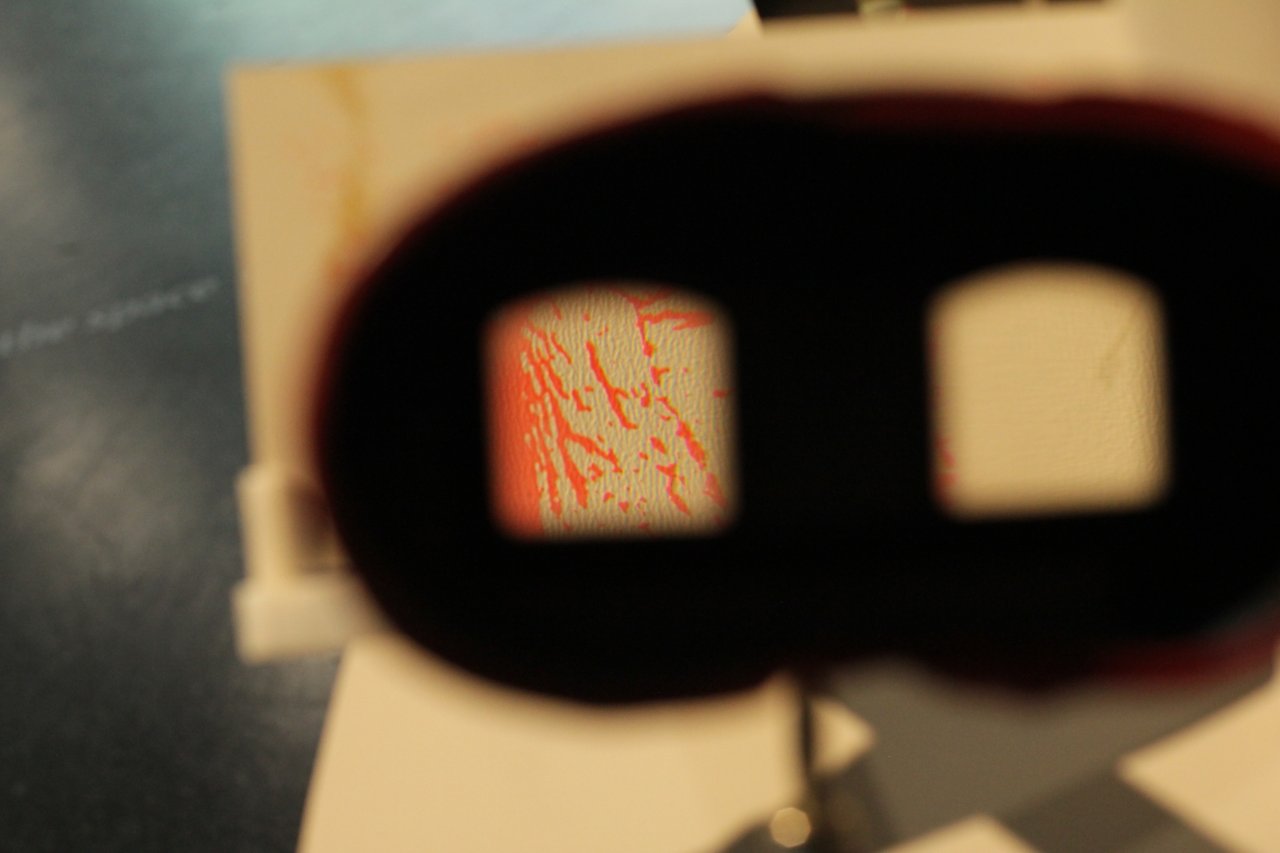
Nayarí’s installation Spells for Shapeshifting stems from observations of urban wildlife and city forests, exploring non-human perspectives and environmental interactions. The work, using stereoscopic found objects, prints and text, incorporates folk magic into playful instruments that illustrate examples of shapeshifting, blending inspirations from friends, family, and Graz’s wildlife.
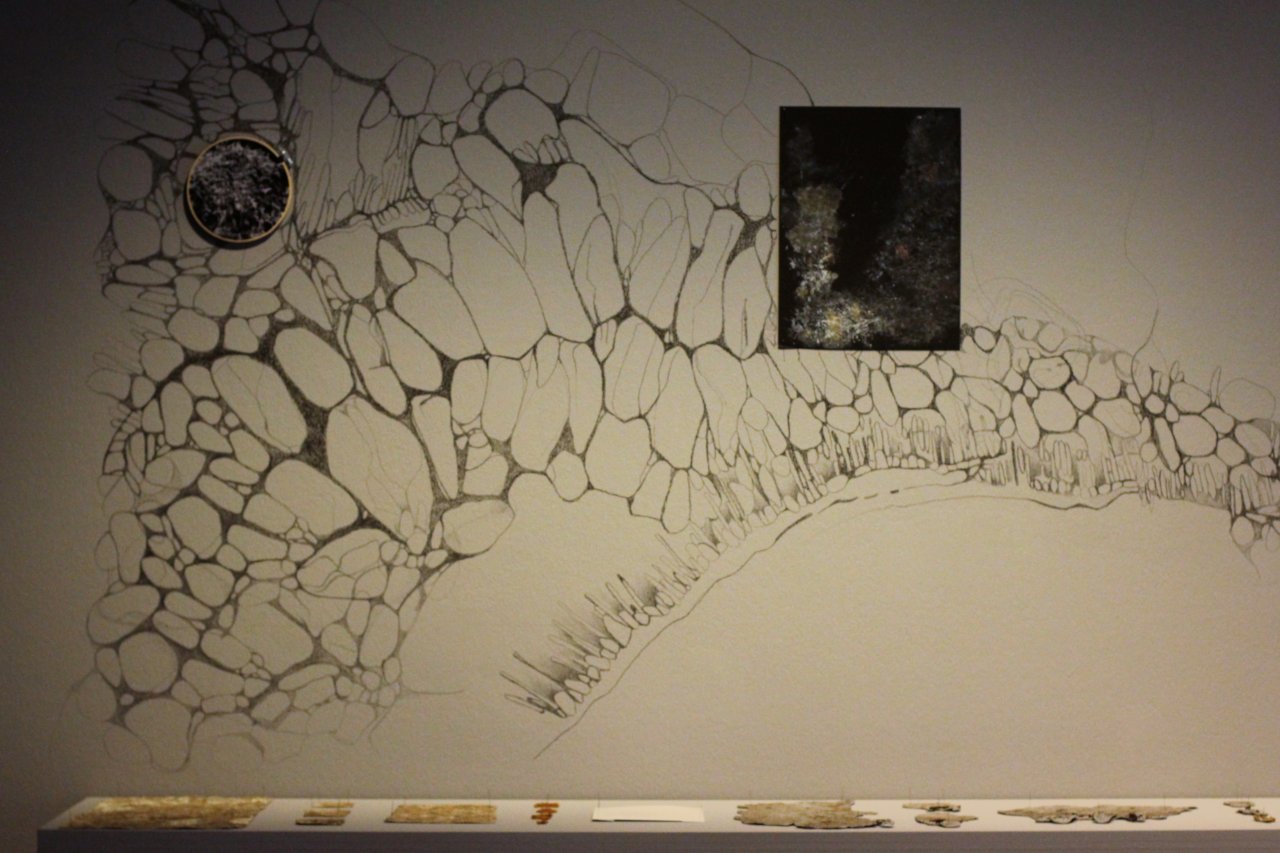
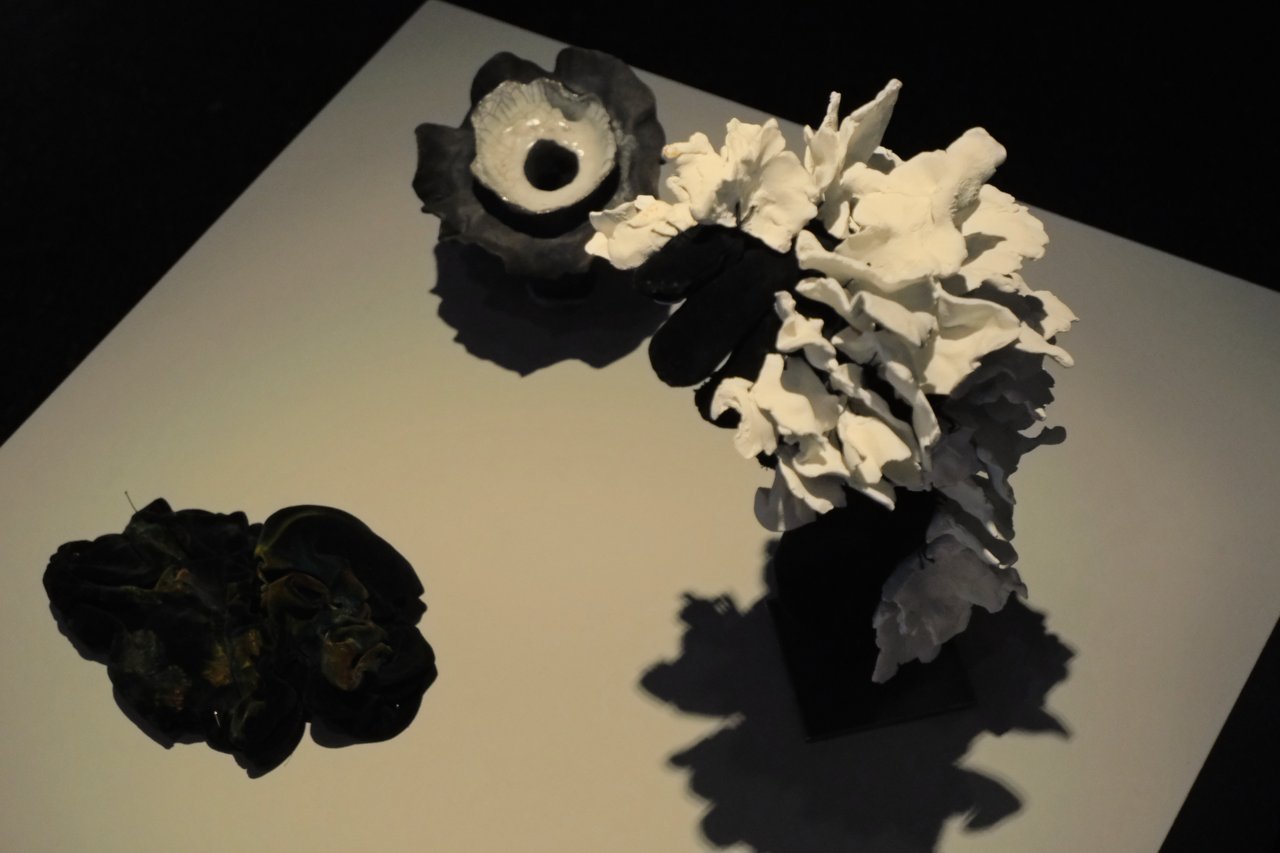
Elena’s installation Rhizinate gathers traces from the multi-sites of simularr—across Graz, San Cesario di Lecce, and Klagenfurt—and the year-long reverberations that followed. Using various materials and techniques, from lichen prints and cerami Rooted in shared processes and non-hierarchical exchanges, it reflects on how collective imagination convergences become material. At the centre lies the lichen: a more-than-human collaborator, a symbiotic being that resists categorization. Its hybrid structure—fungi, algae, cyanobacteria, and microbial others—became a metaphor for the project‘s experimental ecology.
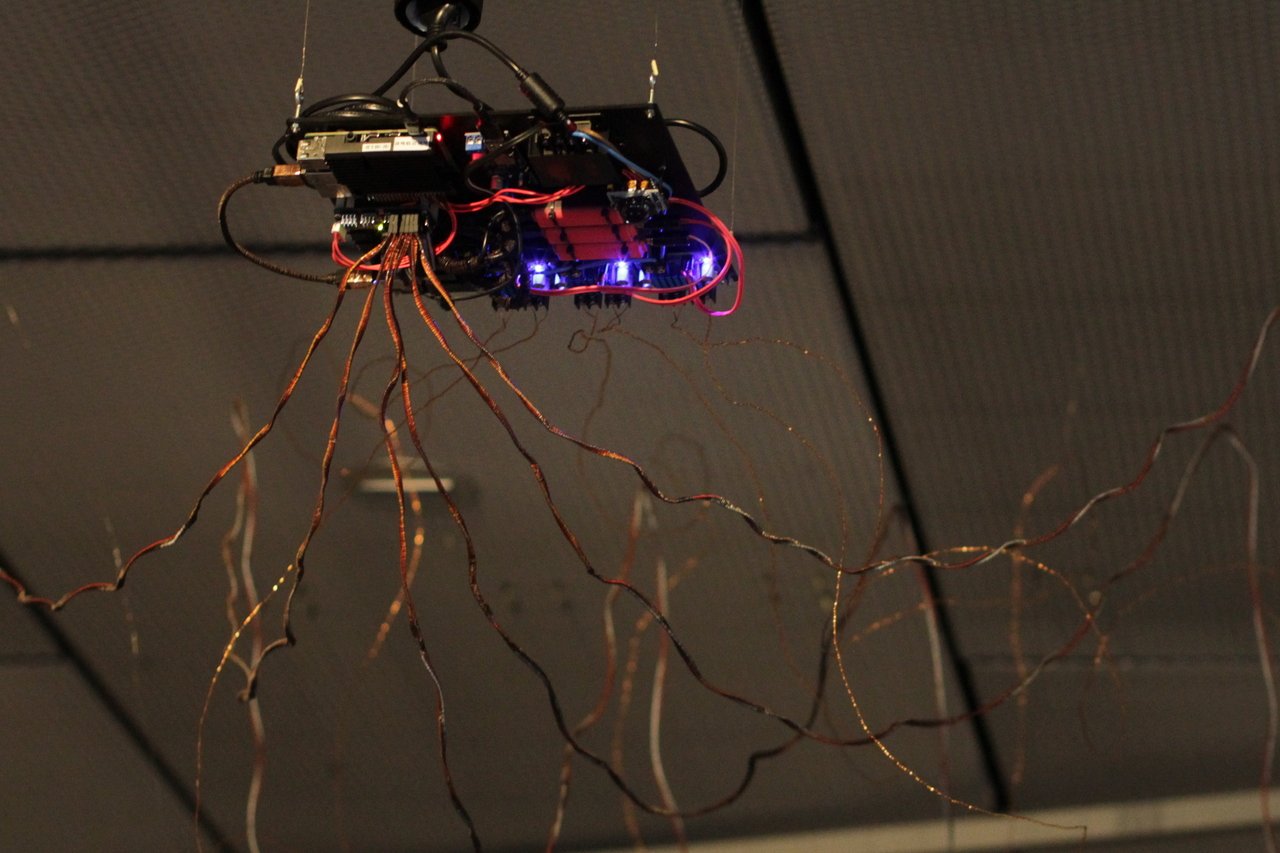
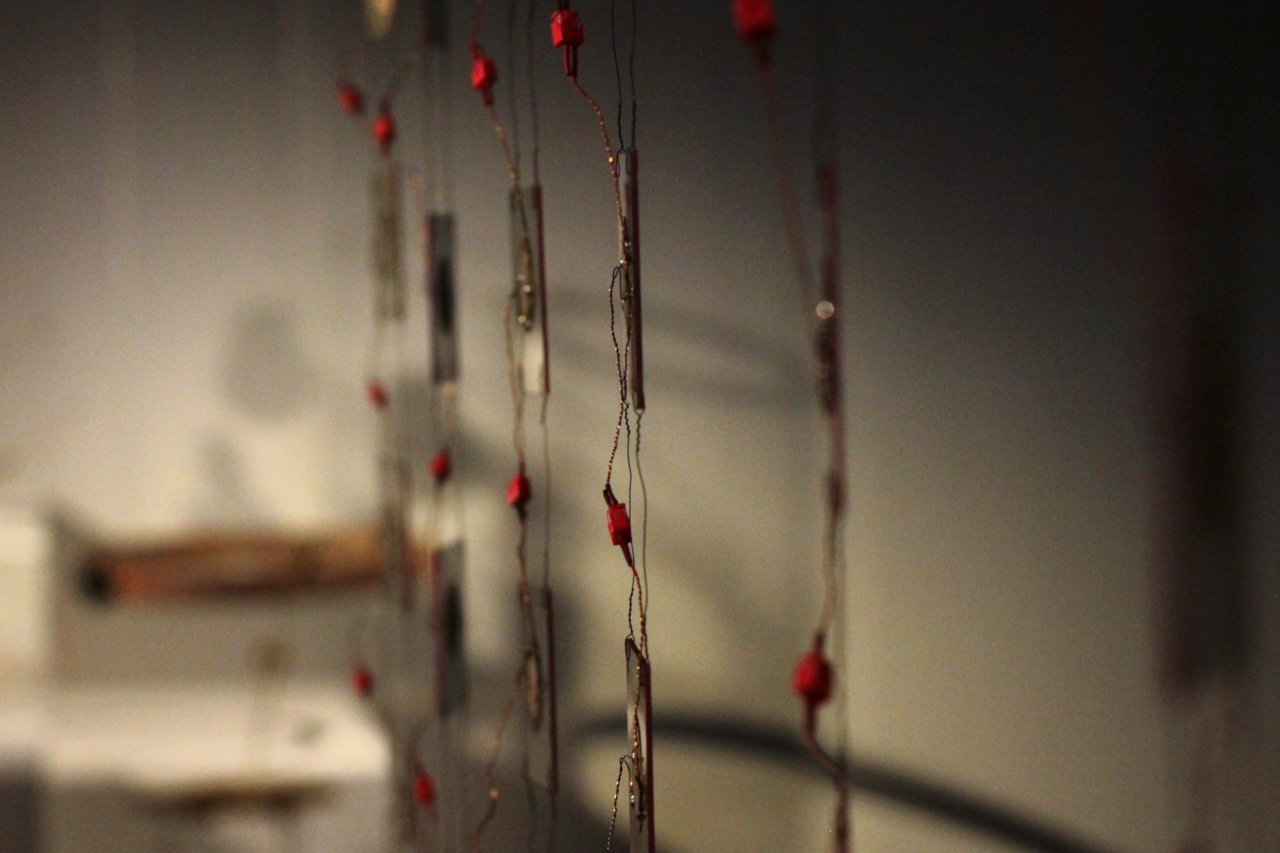
Hanns Holger’s installation Reticule (suspend) is built around the wonderment of glass, its fragility, its origin in sand, its property of translucency, and most of all, its sonic properties. During the third interval, the reticules formed a ‘field kit’, allowing various arrangements around the garden at Hoke Werkhaus, probing their vicinity to water, leaves, bricks, trees, ants; probing the sounds that others made; probing materials, either found on site or provided by others. Being outside seems the reticules’ natural habitat, whereas in the inside spaces they ask for a stronger presence in themselves; in Neue Galerie, they form a suspended rug of six horizontal arms of nineteen vertical elements with the ability to combine their individual faint sonic capabilities to claim a stronger voice.
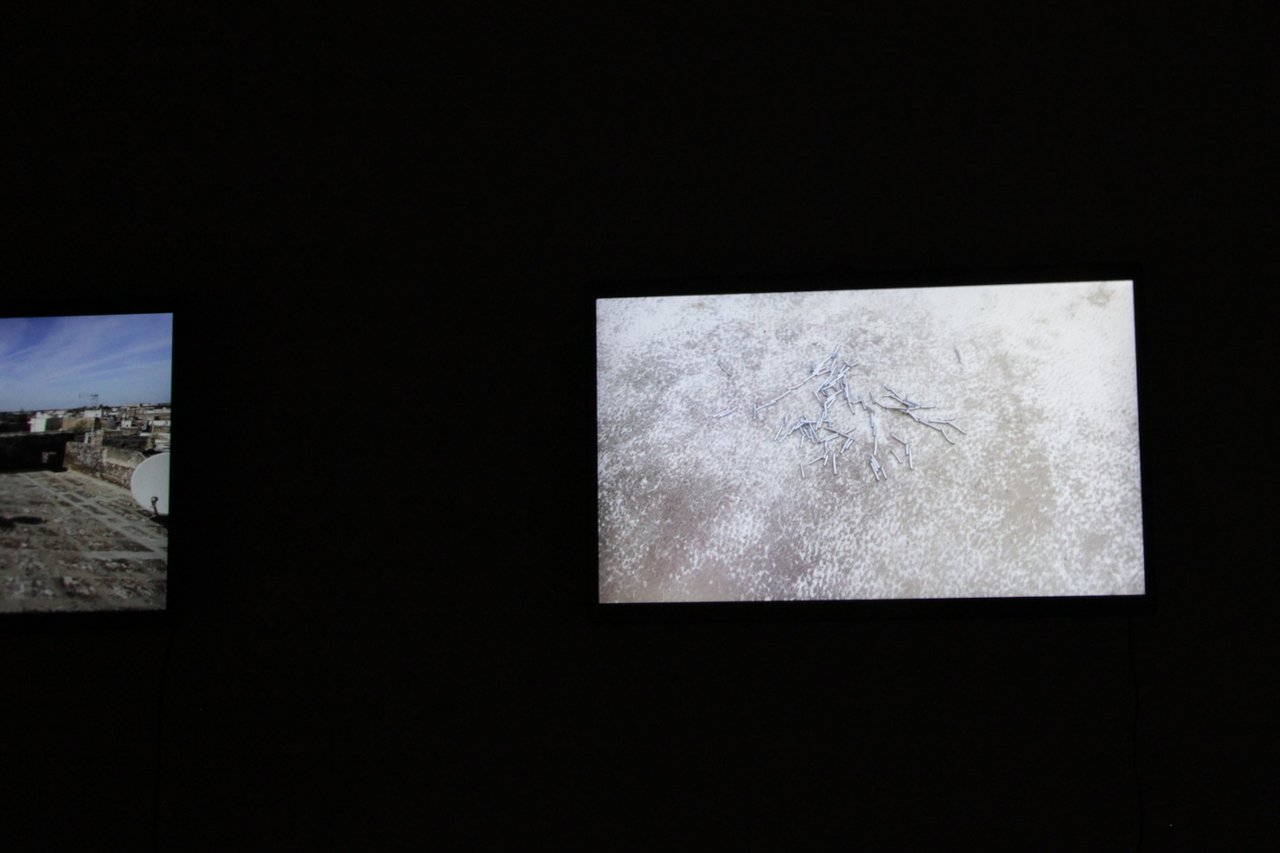
Engaging with the project’s conceptual anchor in simultaneity and relationality, Fulya’s approach focuses on sonic-embodied processes of affective nearness, co-presence, and responsive relationality. These modes of engagement evolved through continuous interactions with her companions—including humans (research-creation companions), more-than-humans, texts, and materials—who co-inform and co-create the work. In the exhibition, we see two video screens, one showing an experiment with magnetic movement on the skin of tambourine, the other showing an improvisation of Miguel with the sounds and sound object of Fulya. A postcard with QR code points to a dedicated Research Catalogue exposition.
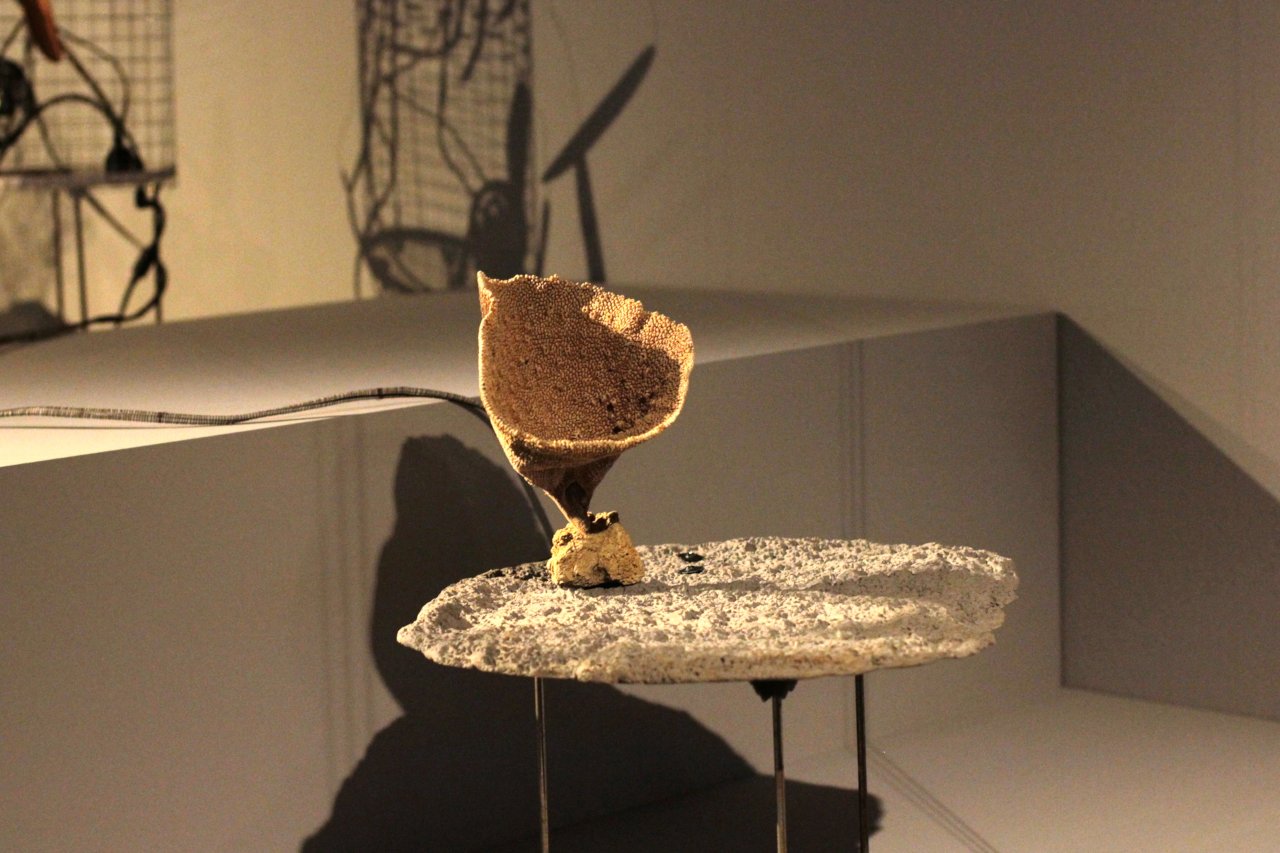
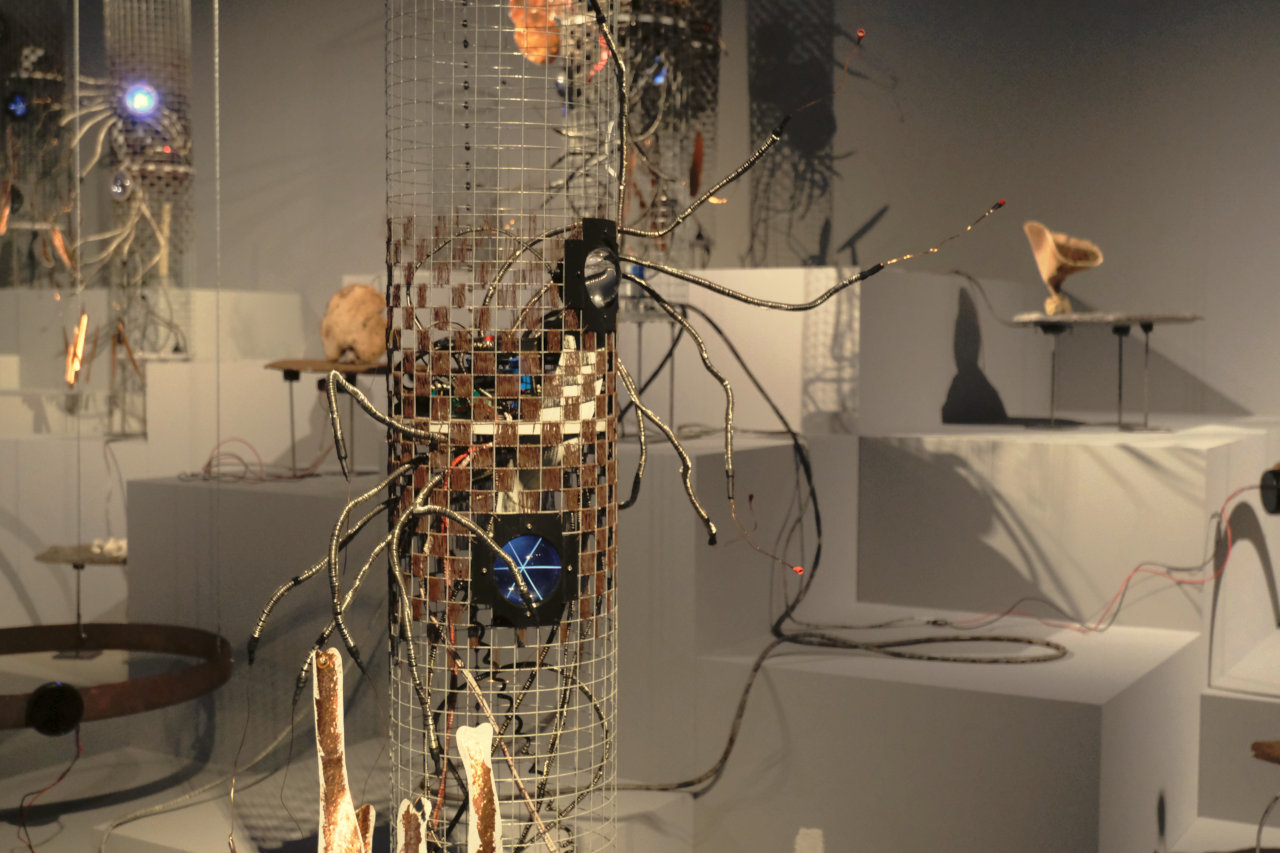
Shown for the first time as a group of six, Assembly of Rogues is an intermedia installation by Nayarí and Hanns Holger on strange hybrid entities. The name, Rogue, serves as a stable handle, as a denominator of the species, despite the ability to build different rogues and conduct different experiments. It brings together multiple aspects that were moving in our heads. The Rogues were imagined as organisms that learn, adapt and explore, creating perhaps an inner map of their perceived surroundings, like the computer game’s character unfolds a procedurally generated labyrinth of connected spaces via movement.
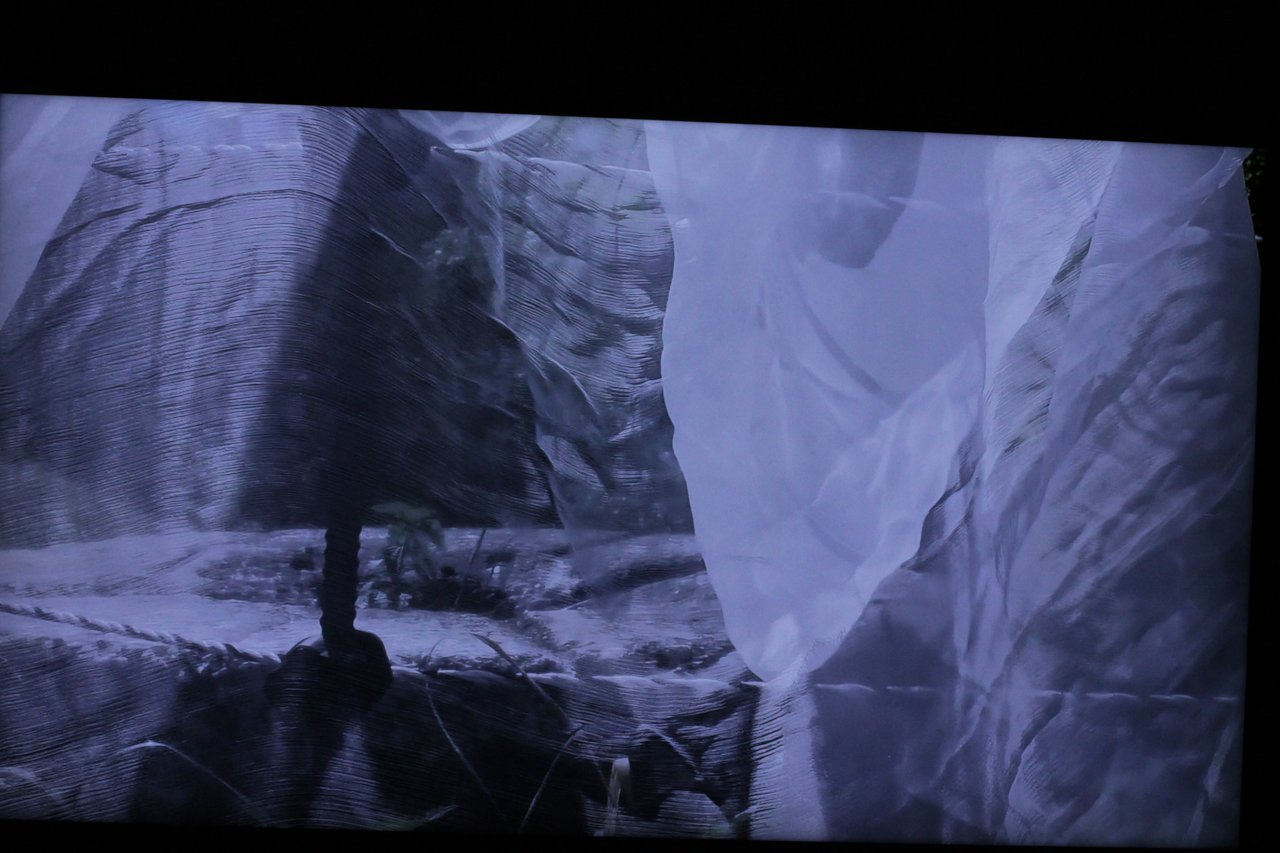
In Andrea’s work, shown here as a video piece, the surroundings often are invited to participate in a form of collaboration. She is interested in how a specific place, its natural features and atmosphere, can trigger memories, associations, and insights in each individual. During simularr, she looked at the interaction with the other participants as an ecosystem of exchange, rather than individuals collaborating. How can we take all the different factors surrounding us into consideration? How could we as artists align our practices with this larger whole? From these questions, the triplet theme of «Earth-Soil-Land» arose.
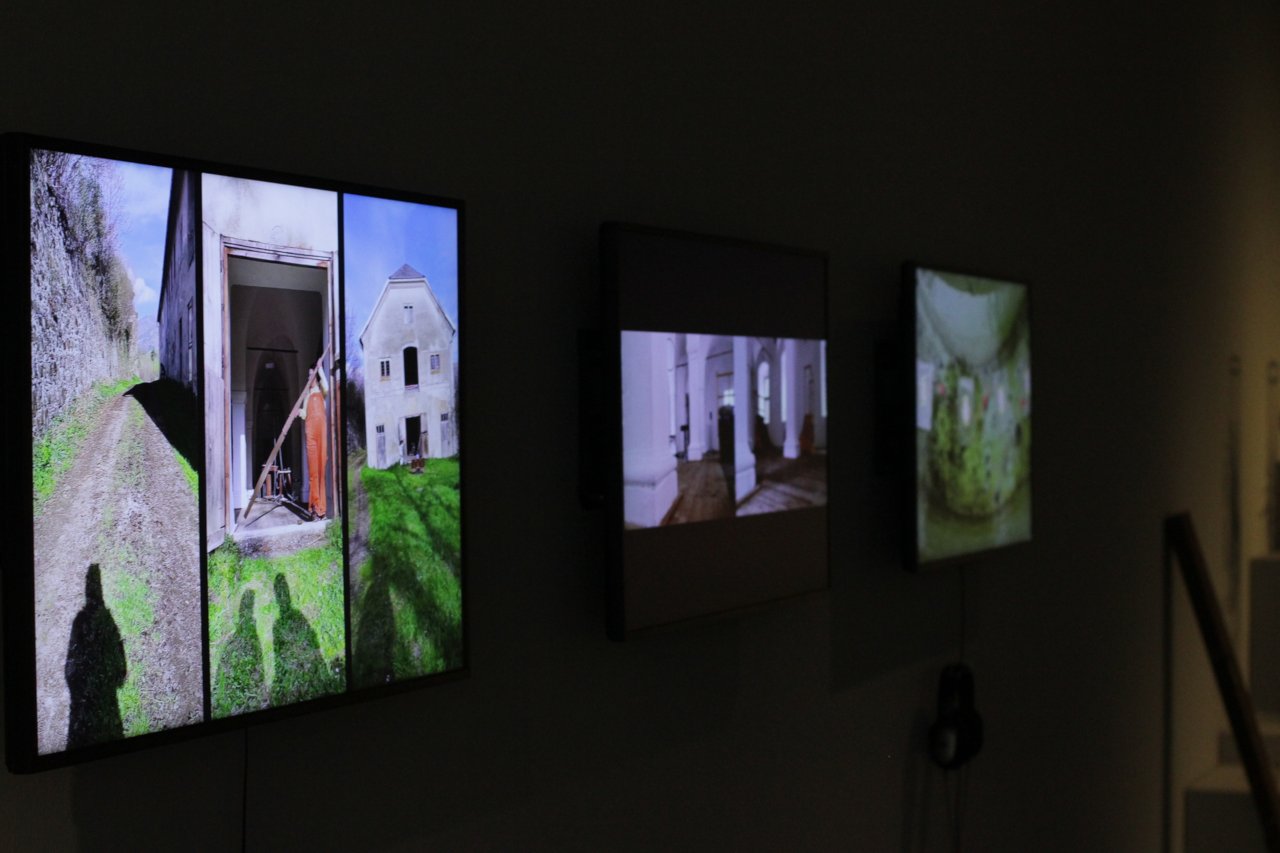
Next to Andrea’s, there are two more video works. Charlotta called her project Arrivarium. Although it draws on a pre-existing artistic practice of hers—video treasure hunts—Arrivarium was not initially conceived as an artwork. Instead, it became a way for her to engage with the simularr group’s broader questions around simultaneity, spatiality, and collaboration. The full body of material—about 400 minutes of footage—turned into a kind of field note in video form: a 3D notebook or Wimmelbuch (seek-and-find book) of accidental relations to the others. Likewise, Emma’s video was not conceived as an artwork, but as an experimental study on the space that the others were working in on during the first interval. Based on slow panning of a laptop camera mounted on a skateboard, we can witness the strange transformation of perspective, even more apparent as different angles are combined. People dis- and reappear in the column filled hall.
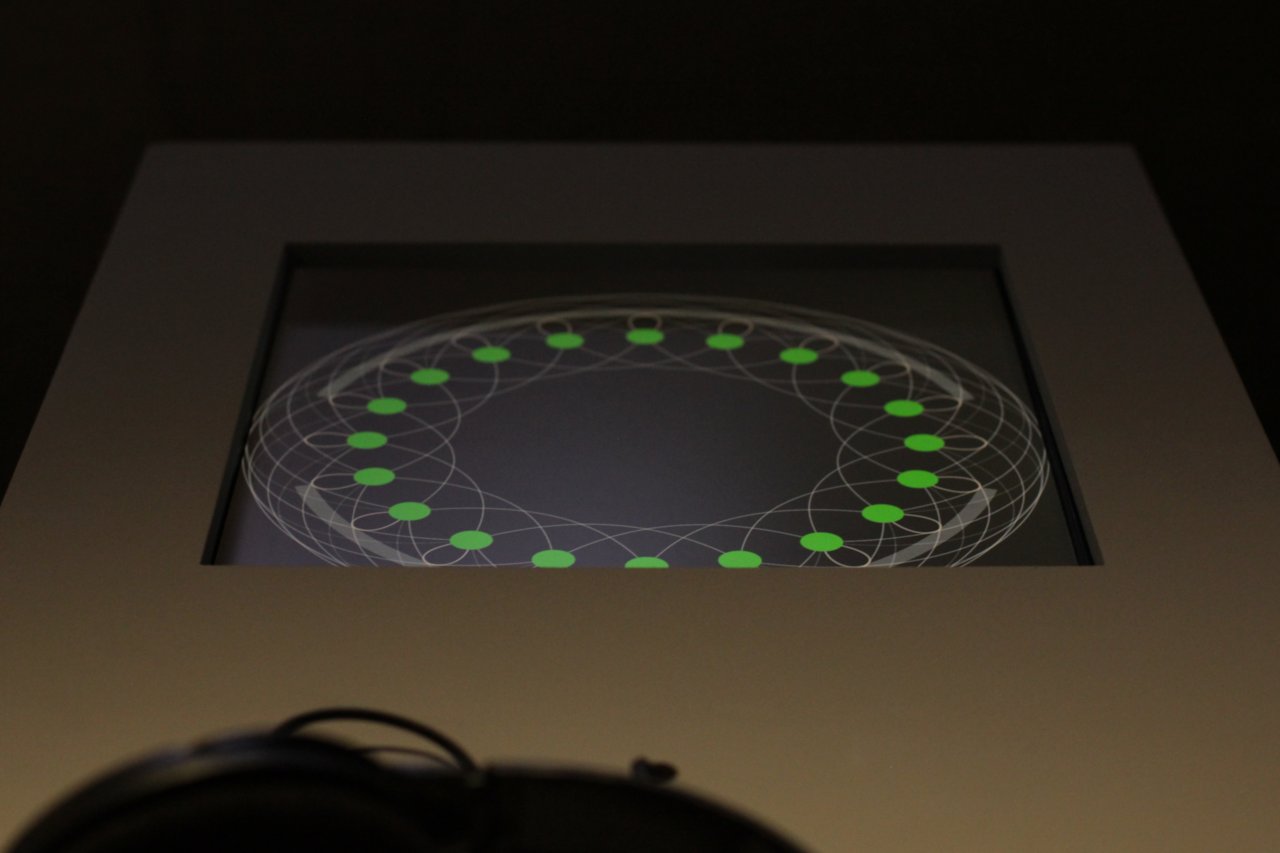
Line Loop Structure 2 is an audio-visual piece by Ludvig. It is a presentation of a small selection of patterns, a few permutations of an immense space of possibilities, connecting circular structures of sonic processing nodes into weaves through which sound can flow. When the weave is constructed so that it folds back into itself, creating endless loops, feedback processes emerge. The piece shows, for each configuration, first the connections of a single node and then the resulting braid of connections of all nodes. Next to the screen, a paper can be seen: Ludvig is often using hand drawing to sketch out ideas.
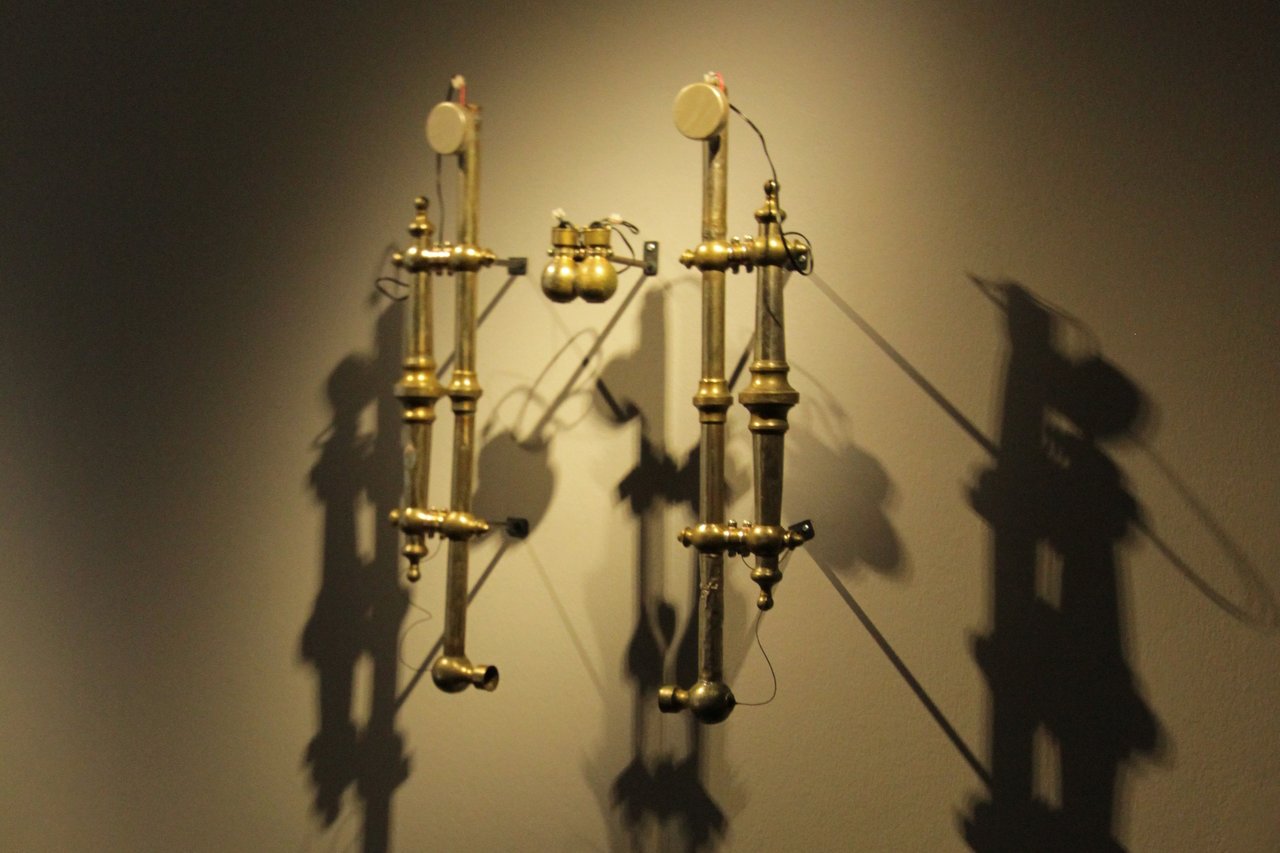
Daniele’s piece Specola is a sound installation that metaphorically interweaves the meanings of observation, reflection and mirror. As visitors listen to the work, Specola also listens to them, using acoustic reflections to mirror their presence in the sounds produced. Sitting between the tubes, the visitor becomes the reflecting mirror, the ‘instrument of observation’ through which the installation is accessed. Specola is a reconfiguration of some elements that were part of the site-specific sound intervention Observatorium, developed in Palazzo Russo, San Cesario di Lecce, Italy, April 2024, during the second simularr research interval.
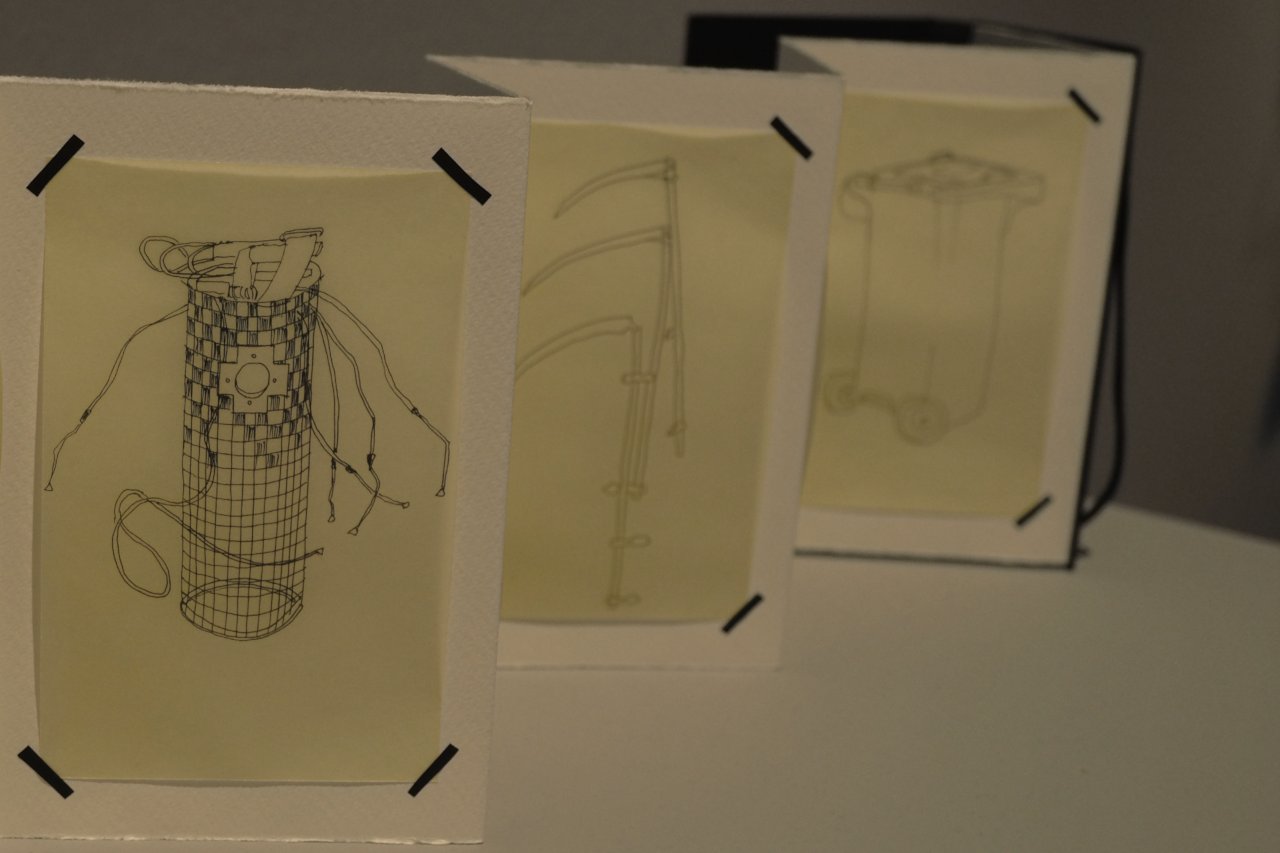
Franziska is interested in studying and drawing ‘everyday things’, and she is particularly fascinated by the objects that we encounter in our workshops: the tools, as implements for making other things. At the same time, one wonders how these devices for making other things were made, where they come from at all. Who invented or constructed them. Who built them? The longer one tries to imagine this story of origin, the more the origin of the equipment gets lost in the darkness of an entire human history.
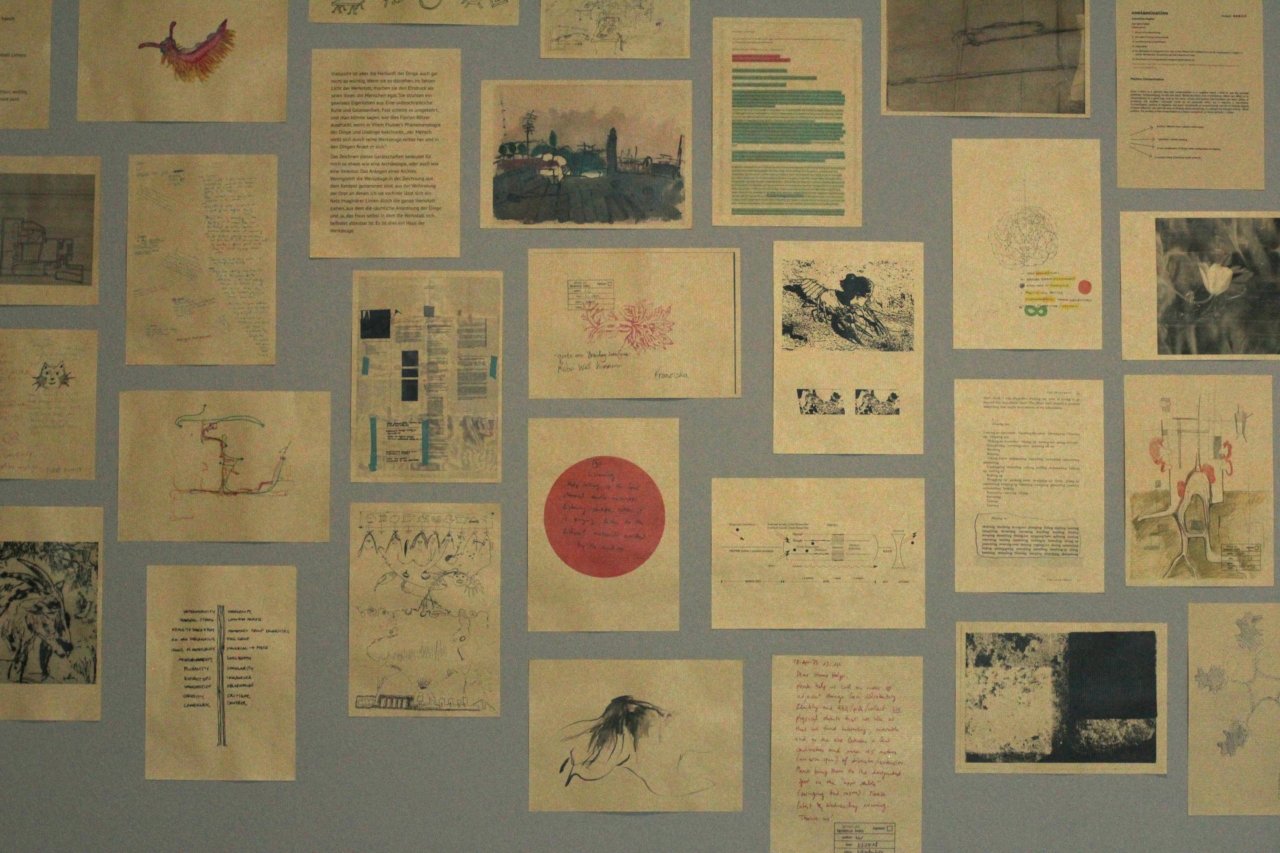
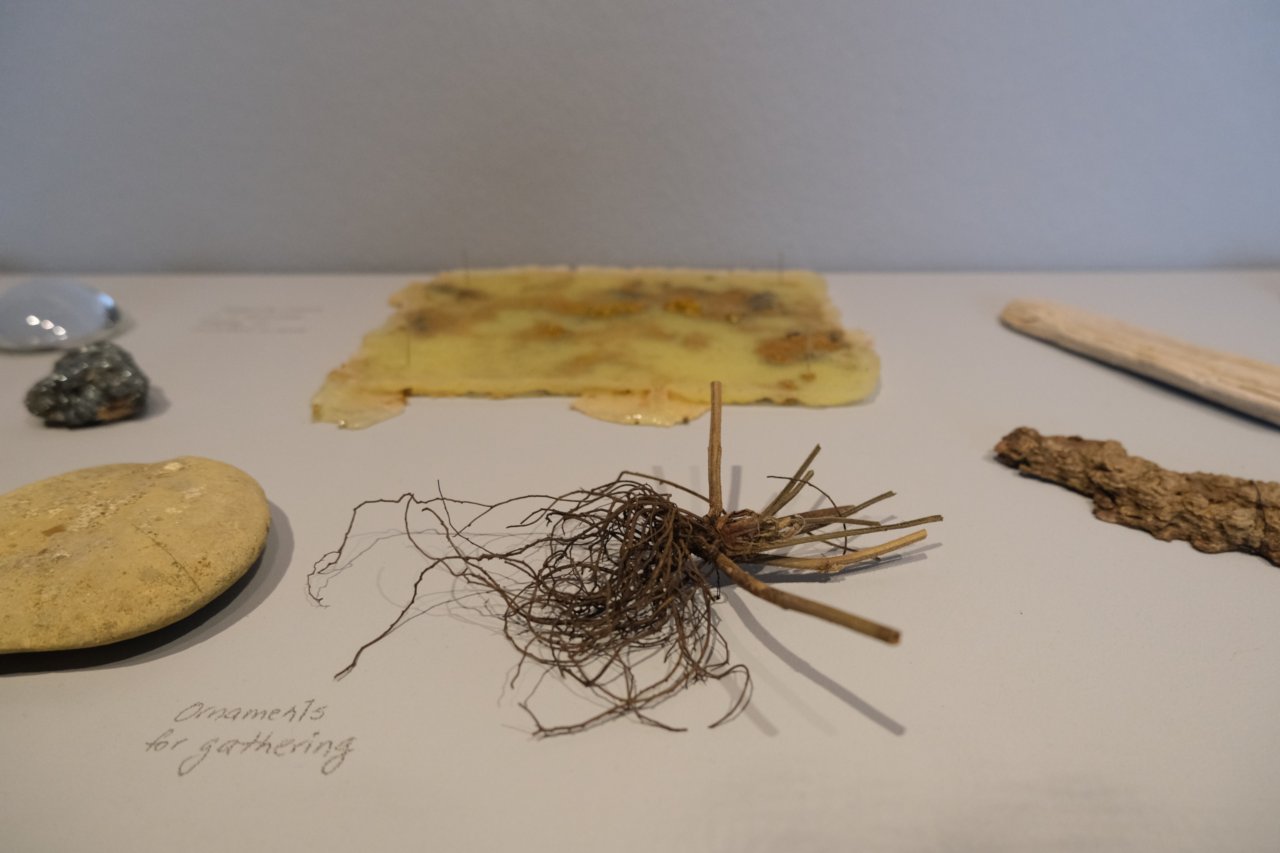
Right upon entering the gallery, one finds a long table showing various objects that we have come to call ‘artefacts and propositions’ in the project. They are accompanied by a set of notations, texts and drawings, sketches, attached to the wall. Elements by all team members are collected, including two of our facilitators, Susanne Bosch and Caroline Gatt. Artefacts bear witness to the project as more stable or reified forms, physical left-overs. We call them artefacts due to their witness function and to tame the impulse to polish them and work them out as autonomous artworks, instead leaving them susceptible to future unmaking and remaking, also avoiding struggle for control and authorship.